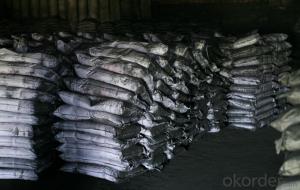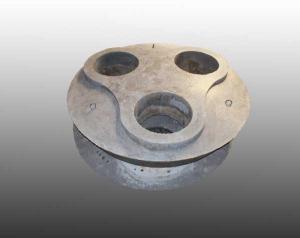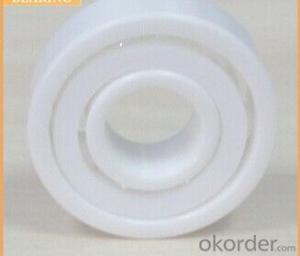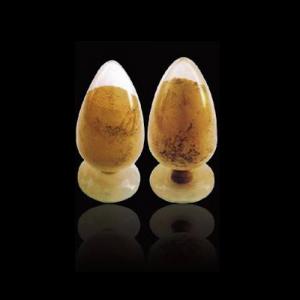Low Nitrogen Carbon Raiser Electrode Scarps
- Loading Port:
- Shekou
- Payment Terms:
- TT OR LC
- Min Order Qty:
- 20 m.t
- Supply Capability:
- 1000 m.t/month
OKorder Service Pledge
OKorder Financial Service
You Might Also Like
Factory Background
The factory is majorly running and operating carbon additive (pitch coke, calcined petroleum coke and anthracite), low nitrogen carbon additive, and brake pad making material. Company is the long term supplier of Sinosteel Corporation, Shanghai Carbon Corporation, the plant of SGL Group the Carbon Company in China and some largest special carbon products producing plants.
YUAI also supplies huge amout of high quality carbon additive and graphite carbon additive to steel plants, foundries and ferrotungsten plants. YUAI has been assigned by BAO STEEL as the only organization for processing pitch coke for export purpose. The group’s major products are constantly exported to Japan, Korea, Malaysia, South East Asia countries, Europe and America, which receive praises by our consumers.
The group has invested numbers of calcinators in Anhui China to ensure the capability of producing and processing huge amount of carbon additive. Further investment is on process. According to the orders from customers, YUAI is able to processing and providing different specifications of carbon additive and other products. To provide best quality of products and to offer customers most satisfied service is YUAI’s operating objectives.
Calcined Petroleum Coke
FC:98.5%min,
S:0.5%max
A:0.8%max
V:0.7%max
Mositure:0.5%max
Size:1-5mm
This product is mainly used in steel-making and foundry. Calcined Petroleum Coke
Calcined Petroleum Coke comes from delayed coke which extracted from oil refinery. Although Calcined Petroleum Coke contains a little bit higher level of sulfur and nitrogen than pitch coke, the price advantage still makes it widely used during steel-making and founding as a kind of carbon additive/carburant.
Technology:
Laborary Equpment
In our lab,we has a high precision balance,mullfe furnace,sample making machine, dring box,sulfur measurement instrument and other calibratiing equipments.As a result,before deliverung to our customers,our products have to pass a strict test to ensure the quality and components.The testing reports will be sent to our customers to confirm untill they satisfy with it.
Packaging & Delivery
Packaging Detail:25kg paper bag into 1t weaving bag 5kg, 10kg and 20kg weaving bag into 1t weaving bag 25kg weaving bag put on pallet covered with entanglement wrap product direct into packing bag 25kg paper bag put on pallet covered with entanglement Wrap 25kg weaving bag into 1t weaving bag.
Delivery Details: 7 days
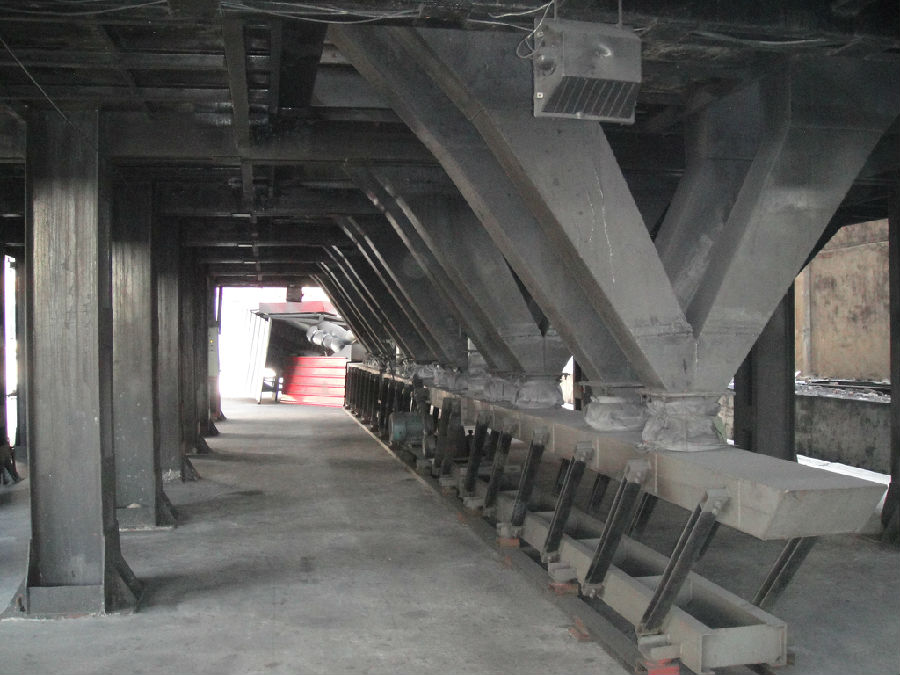

- Q:What are the specific requirements of monolithic refractories for continuous casting applications?
- The specific requirements of monolithic refractories for continuous casting applications are designed to withstand the extreme temperatures and thermal shock conditions experienced during the continuous casting process. Firstly, these refractories must have high thermal conductivity to effectively transfer heat away from the molten metal and maintain a stable casting temperature. This helps to prevent the formation of defects such as cracks, hot spots, and uneven solidification in the cast product. Secondly, monolithic refractories for continuous casting applications must have high refractoriness, meaning they can withstand the high temperatures of the molten metal without melting or deforming. This ensures the refractories can provide a protective lining and maintain their structural integrity throughout the casting process. Additionally, these refractories must have excellent resistance to thermal shock. The continuous casting process involves rapid cooling and heating cycles, which can create significant temperature differentials and induce thermal stresses. Monolithic refractories with low thermal expansion and high thermal shock resistance can withstand these conditions without cracking or spalling. Furthermore, good erosion and corrosion resistance are crucial requirements for monolithic refractories in continuous casting applications. The molten metal and slag can be highly corrosive and abrasive, leading to wear and chemical attack on the refractory lining. Hence, refractories with high resistance to erosion and corrosion are essential to ensure the longevity and stability of the lining. Lastly, monolithic refractories for continuous casting applications should have good workability and ease of installation. This allows for efficient and precise lining installation, reducing downtime during maintenance or repairs. Overall, the specific requirements of monolithic refractories for continuous casting applications include high thermal conductivity, refractoriness, thermal shock resistance, erosion and corrosion resistance, as well as good workability. Meeting these requirements ensures the refractories can effectively protect the casting equipment and maintain the quality of the cast products.
- Q:What is the role of monolithic refractories in blast furnaces?
- Monolithic refractories play a crucial role in blast furnaces as they provide high temperature resistance, erosion and corrosion resistance, thermal insulation, and structural integrity. These refractories are used to line the inside of the blast furnace, forming a protective barrier against the extreme heat and chemical reactions occurring within. They help to maintain the integrity of the furnace and ensure its efficient operation by withstanding the aggressive conditions of the molten iron and slag. Additionally, monolithic refractories allow for easier installation and repair compared to traditional brick refractories, making them a preferred choice in blast furnace applications.
- Q:What are the typical compositions of monolithic refractories?
- Monolithic refractories are typically composed of a combination of aggregates, binders, and additives. Aggregates are materials such as alumina, magnesia, or silicon carbide that provide the main refractory properties. The choice of aggregate depends on the desired characteristics of the refractory, such as resistance to high temperatures, thermal shock, or chemical attack. Binders are used to bind the aggregates together and give the refractory its shape and strength. Common binders include clay, calcium aluminate cement, or colloidal silica. The binder also contributes to the overall performance of the refractory, influencing properties such as thermal conductivity and chemical resistance. Additives are often incorporated into the composition to improve specific properties or enhance the processing of the monolithic refractory. These additives can include plasticizers, which improve workability and allow for easier installation, or antioxidants, which can increase the refractory's resistance to oxidation. Overall, the specific composition of a monolithic refractory can vary depending on the intended application and the desired performance characteristics. Different combinations of aggregates, binders, and additives can be tailored to suit specific temperature ranges, chemical environments, or mechanical stresses.
- Q:What types of monolithic refractories are commonly used in the iron and steel industry?
- In the iron and steel industry, several types of monolithic refractories are commonly used due to their high resistance to extreme temperatures and mechanical stresses. These refractories are essential for lining furnaces, ladles, and other equipment used in the production of iron and steel. One commonly used monolithic refractory in this industry is castable refractory. It is a mixture of refractory aggregates, binders, and additives that can be poured or cast into various shapes and sizes. Castable refractories are versatile and can be easily installed, making them suitable for lining large furnaces and ladles. They offer good thermal insulation and excellent resistance to thermal shocks. Another type of monolithic refractory used in the iron and steel industry is plastic refractory. It consists of a high-alumina refractory aggregate mixed with a bonding agent, usually clay. Plastic refractories have a high plasticity and can be easily shaped by hand or with a trowel. They are commonly used for repairs and patching in furnaces and ladles. Ramming refractories are also commonly employed in the iron and steel industry. These refractories are made of granular refractory materials mixed with a binder. They are installed by ramming the mixture into the desired shape using a pneumatic hammer or manual ramming tools. Ramming refractories offer high resistance to abrasion and erosion, making them suitable for lining the bottoms of furnaces and other areas subjected to intense mechanical wear. Lastly, gunning refractories are frequently used in the iron and steel industry. Gunning refractories are made of fine refractory powders mixed with water or a bonding agent. They are applied using a gunning machine, which propels the refractory material onto the surface to be lined. Gunning refractories are commonly used for repairing and maintaining the linings of ladles, tundishes, and other equipment. Overall, the iron and steel industry relies on a variety of monolithic refractories such as castables, plastics, rammings, and gunnings to ensure the reliable and efficient operation of their equipment in high-temperature environments. These refractories provide excellent thermal insulation, resistance to thermal shocks, and mechanical strength essential for the production of iron and steel.
- Q:What are the main factors affecting the erosion resistance of monolithic refractories?
- The erosion resistance of monolithic refractories is influenced by several key factors. These factors include the chemical composition of the refractory material, the microstructure of the material, the temperature and environment in which it is used, and the mechanical properties of the material. The chemical composition of the monolithic refractory plays a crucial role in its erosion resistance. Certain chemical elements and compounds can enhance the resistance of the refractory to erosion, while others may make it more susceptible. For example, the addition of alumina (Al2O3) in the refractory composition can improve its resistance to erosion, as it forms a protective layer on the surface. On the other hand, the presence of impurities or excess amounts of certain elements can weaken the refractory and increase its susceptibility to erosion. The microstructure of the monolithic refractory is another important factor affecting erosion resistance. The refractory's microstructure refers to the arrangement and distribution of its constituent particles. A well-structured microstructure with a uniform distribution of particles can provide better erosion resistance as it ensures a more even distribution of load during exposure to erosive forces. Conversely, a poorly structured microstructure with clusters or weak bonding between particles may lead to localized erosion and failure. The temperature and environment in which the refractory is used also significantly influence erosion resistance. High temperatures can cause thermal stresses, chemical reactions, and phase changes in the refractory material, all of which can affect its erosion resistance. Additionally, the presence of corrosive gases, liquids, or slags can accelerate erosion by promoting chemical reactions or attacking the refractory material, leading to its degradation. Lastly, the mechanical properties of the monolithic refractory, such as its strength, hardness, and toughness, contribute to erosion resistance. A refractory with higher mechanical strength and hardness can withstand erosive forces better than a weaker material. Similarly, a higher toughness helps the refractory resist cracking or spalling when subjected to impact or thermal shock, reducing its vulnerability to erosion. In summary, the erosion resistance of monolithic refractories is influenced by the chemical composition, microstructure, temperature and environment, and mechanical properties of the material. Understanding and optimizing these factors can help in developing refractories with improved erosion resistance for various industrial applications.
- Q:How do monolithic refractories perform in electric arc furnace roof applications?
- Monolithic refractories are highly effective in electric arc furnace (EAF) roof applications due to their unique properties and characteristics. These refractories, which are composed of a single, solid material, offer several advantages in this specific application. Firstly, monolithic refractories provide excellent thermal insulation, which is crucial in EAF roof applications. The intense heat generated in the furnace can cause structural damage to traditional brick refractories, but monolithic refractories have a higher resistance to thermal shock, reducing the risk of cracking and spalling. This allows them to maintain their integrity and insulation properties even in extreme temperature conditions. Moreover, monolithic refractories have high strength and abrasion resistance, ensuring their durability and longevity in EAF roof applications. The roof of an electric arc furnace is exposed to harsh conditions, including the impact of scrap materials and the erosive effect of molten metal and slag. Monolithic refractories are designed to withstand these challenges, offering superior resistance to mechanical wear and erosion. Another advantage of monolithic refractories is their ease of installation. Unlike traditional brick refractories, which require time-consuming and complex installation processes, monolithic refractories can be applied quickly and efficiently. They can be cast, gunned, or sprayed onto the roof surface, conforming to any shape or contour, thus reducing downtime during installation or repair. Furthermore, monolithic refractories provide increased energy efficiency in EAF roof applications. Their superior insulation properties minimize heat loss, resulting in reduced energy consumption and cost savings. This is particularly important for electric arc furnaces, as they rely on high temperatures to melt and process metals, and any heat loss can significantly impact the efficiency and productivity of the furnace. In conclusion, monolithic refractories are highly suitable for electric arc furnace roof applications due to their exceptional thermal insulation, strength, abrasion resistance, ease of installation, and energy efficiency. These refractories offer significant advantages over traditional brick refractories, ensuring optimal performance and prolonged service life in the demanding environment of an electric arc furnace.
- Q:What are the factors influencing the choice of monolithic refractories for different furnace types?
- The choice of monolithic refractories for different furnace types is influenced by various factors that need to be considered in order to ensure optimal performance and efficiency. These factors include the operating temperature, type of heat transfer mechanism, chemical composition of the furnace atmosphere, thermal cycling, mechanical stresses, and specific application requirements. One of the primary factors to consider is the operating temperature of the furnace. Different monolithic refractories have different temperature limits, and it is crucial to select a refractory material that can withstand the specific temperature range of the furnace without significant degradation or failure. For high-temperature applications, materials like alumina, magnesia, and silica are commonly used due to their excellent thermal stability. The type of heat transfer mechanism is another important consideration. Furnaces can use various methods to transfer heat, such as radiation, conduction, or convection. Each of these mechanisms may require different refractory properties. For example, radiation-dominated furnaces may require a refractory material with high thermal conductivity to efficiently transfer heat, while convection-dominated furnaces may require a material with good resistance to gas flow erosion. The chemical composition of the furnace atmosphere is also a crucial factor. Depending on the process being carried out in the furnace, the atmosphere may contain highly corrosive gases or chemicals. In such cases, it is essential to select a monolithic refractory that is resistant to chemical attack and can maintain its structural integrity in the presence of aggressive substances. Thermal cycling, which involves repeated heating and cooling cycles, is another factor influencing the choice of monolithic refractories. Some refractory materials may be prone to thermal shock or spalling when subjected to rapid temperature changes. In contrast, others may have better resistance to thermal cycling, making them more suitable for applications that involve frequent temperature variations. Mechanical stresses, such as load or vibration, can also impact the choice of refractories. Furnaces that experience mechanical stresses require materials with good mechanical strength and resistance to abrasion. Refractory materials like silicon carbide or zirconia may be preferred in such cases due to their high strength and toughness. Lastly, specific application requirements should be considered when selecting monolithic refractories. Factors such as installation method, ease of maintenance, availability, and cost-effectiveness may influence the choice of refractory material. In summary, the choice of monolithic refractories for different furnace types is influenced by the operating temperature, heat transfer mechanism, chemical composition of the furnace atmosphere, thermal cycling, mechanical stresses, and specific application requirements. Considering these factors is essential to ensure the longevity, performance, and efficiency of the refractory lining in various furnace applications.
- Q:What are the specific requirements of monolithic refractories for ladle transfer applications?
- Monolithic refractories for ladle transfer applications need to have high thermal shock resistance, excellent corrosion resistance, and good thermal conductivity. They should also have low porosity to prevent molten metal penetration and maintain their structural integrity. Additionally, these refractories should possess good erosion resistance and be able to withstand the mechanical stresses of ladle transfer operations.
- Q:How do monolithic refractories prevent thermal shock in the iron and steel industry?
- Monolithic refractories prevent thermal shock in the iron and steel industry by providing a continuous and seamless lining that can withstand extreme temperatures and sudden temperature changes. Their high thermal conductivity and low thermal expansion properties allow them to effectively distribute and absorb heat, reducing the likelihood of thermal stress and cracking. Additionally, their ability to form strong bonds with the furnace walls prevents the entry of hot gases and molten metal, further protecting against thermal shock.
- Q:Can monolithic refractories be used for the lining of continuous casting tundishes and molds?
- Yes, monolithic refractories can be used for the lining of continuous casting tundishes and molds. Monolithic refractories are a type of refractory material that is composed of a single, homogeneous structure, in contrast to traditional refractories that are made up of multiple bricks or tiles. Monolithic refractories offer several advantages for lining tundishes and molds in continuous casting processes. Firstly, their monolithic nature allows for easy installation and repair, as they can be cast or gunned into place, eliminating the need for complex brickwork. This results in reduced downtime and increased productivity. Additionally, monolithic refractories have excellent thermal shock resistance, which is crucial for tundishes and molds that experience rapid and extreme temperature changes during the casting process. Their high thermal conductivity also ensures efficient heat transfer, promoting uniform cooling and solidification of the cast metal. Moreover, monolithic refractories offer good resistance to chemical attack, ensuring long-lasting performance even in the presence of molten metal and slag. They also have low porosity, preventing the penetration of metal and preventing the formation of cracks and spalling. Overall, monolithic refractories are a viable and effective choice for lining continuous casting tundishes and molds, providing superior performance, ease of installation, and durability in the demanding conditions of the casting process.
1. Manufacturer Overview |
|
|---|---|
| Location | |
| Year Established | |
| Annual Output Value | |
| Main Markets | |
| Company Certifications | |
2. Manufacturer Certificates |
|
|---|---|
| a) Certification Name | |
| Range | |
| Reference | |
| Validity Period | |
3. Manufacturer Capability |
|
|---|---|
| a)Trade Capacity | |
| Nearest Port | |
| Export Percentage | |
| No.of Employees in Trade Department | |
| Language Spoken: | |
| b)Factory Information | |
| Factory Size: | |
| No. of Production Lines | |
| Contract Manufacturing | |
| Product Price Range | |
Send your message to us
Low Nitrogen Carbon Raiser Electrode Scarps
- Loading Port:
- Shekou
- Payment Terms:
- TT OR LC
- Min Order Qty:
- 20 m.t
- Supply Capability:
- 1000 m.t/month
OKorder Service Pledge
OKorder Financial Service
Similar products
New products
Hot products
Related keywords
